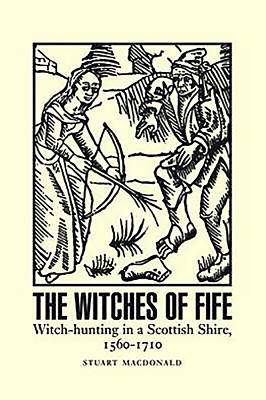
- Retrait gratuit dans votre magasin Club
- 7.000.000 titres dans notre catalogue
- Payer en toute sécurité
- Toujours un magasin près de chez vous
- Retrait gratuit dans votre magasin Club
- 7.000.000 titres dans notre catalogue
- Payer en toute sécurité
- Toujours un magasin près de chez vous
The Witches of Fife
Witch-Hunting in a Scottish Shire, 1560-1710
Stuart MacDonald
Livre broché | Anglais
29,95 €
+ 59 points
Description
Along the coast of Fife, in villages like Culross and Pittenweem, history records that some women were executed as witches. Nevertheless, the reality of what happened the night that Janet Cornfoot was lynched at Pittenweem is hard to grasp as one sits by the harbour watching the fishing boats unload their catch and the pleasure boats rising with the tide. How could people do this to an old woman? Why was no-one ever brought to justice? And why would anyone defend such a lynching? The task of the historian is to try to make events in the past come alive and seem less strange. The details of the witch-hunt are fascinating. Some of the anecdotes are strange. The modern reader finds it hard to imagine illness being blamed on the malevolence of a beggar woman denied charity, or the economic failure of a sea voyage being attributed to the village hag, not bad weather. Witch-hunting was related to ideas, values, attitudes and political events. It was a complicated process, involving religious and civil authorities, village tensions and the fears of the elite.
The witch-hunt in Scotland also took place at a time when one of the main agendas was the creation of a righteous or godly society. As a result, religious authorities had control over aspects of people's lives which seem as strange to us today as beliefs about magic or witchcraft. It was not accidental that the witch-hunt in Scotland, and specifically in Fife, should have happened at this time. This book tells the story of what occurred over a period of a century and a half, and offers some explanation as to why it occurred.
The witch-hunt in Scotland also took place at a time when one of the main agendas was the creation of a righteous or godly society. As a result, religious authorities had control over aspects of people's lives which seem as strange to us today as beliefs about magic or witchcraft. It was not accidental that the witch-hunt in Scotland, and specifically in Fife, should have happened at this time. This book tells the story of what occurred over a period of a century and a half, and offers some explanation as to why it occurred.
Spécifications
Parties prenantes
- Auteur(s) :
- Editeur:
Contenu
- Nombre de pages :
- 256
- Langue:
- Anglais
Caractéristiques
- EAN:
- 9781906566838
- Date de parution :
- 18-10-14
- Format:
- Livre broché
- Format numérique:
- Trade paperback (VS)
- Dimensions :
- 155 mm x 230 mm
- Poids :
- 322 g







